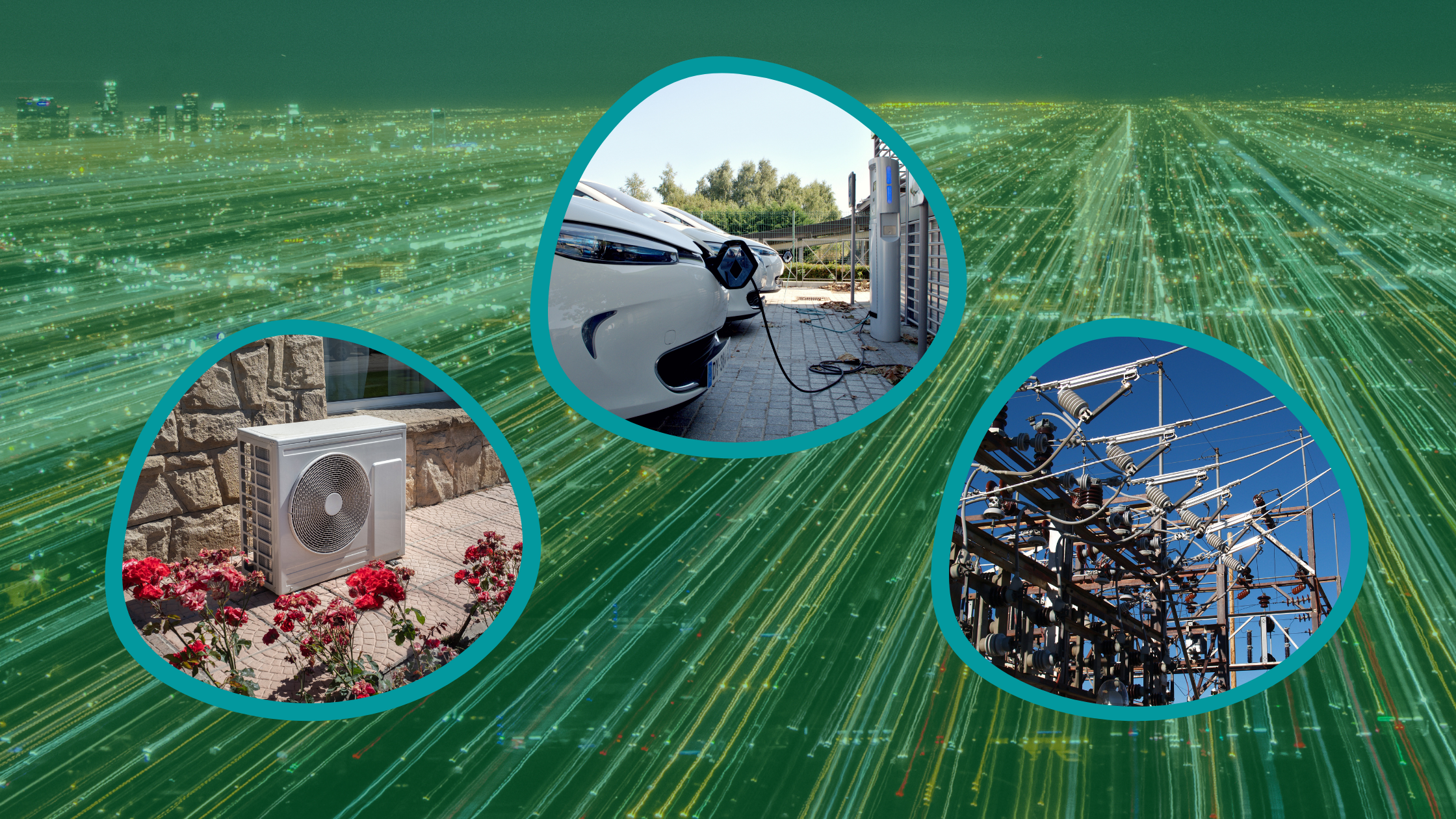
Written by: Andrew Cahill, Green Careers Manager
The term “electrification” is appearing more as governments and corporations set climate goals and low emission targets. Electrification is in the early stages and will play an important role in reducing dependency on fossil fuels, but what is it?
Electrification is when technology which uses fossil fuels is replaced by tech that runs on electricity.
Changing the sources that provide electricity is a crucial part of electrification. Canada has a cleaner electricity grid when compared to other countries. About 80% of electricity comes from zero-emission energy sources. In fact, there are five Canadian provinces (BC, MB, ON, QC, and NL) that burn fossil fuels for 5% or less of their total electricity generation. Complete electrification can only happen when all electricity comes from renewable energy.
Fossil fuels are used for more than electricity, so a switch to electrification of gas heavy tech can reduce greenhouse gas emissions. Here are 3 ways electrification will be making more of an impact on our daily lives in Canada.
1.Electrifying Transportation
Transportation accounted for 25% of Canada’s greenhouse gas emissions in 2019, according to the Government of Canada. Almost all cars, trucks, trains, planes, and boats are using fossil fuels, such as gasoline, diesel, and oil. Electrifying transportation is the fastest growing area in electrification.
Some forms of transportation are easier to electrify than others. Small vehicles and transportation used for short distances are the easiest to electrify. This can include e-bikes and electric scooters. Transportation that covers large distances or transports a heavy load are more challenging to switch.
Electric Vehicles (EV) receive a lot of media attention, as most car companies are competing in this growing industry. EVs can be charged at home or at designated charging stations. More public charging stations are becoming available across cities and major roads. Quebec and British Columbia have the largest networks of EV charging stations.
It’s important to remember that EV’s are only zero-emission if the electricity that powers them comes from a clean energy source.
2.Electrifying Heating
Due to Canada’s geography and climate, there is a lot of energy used to heat buildings. In 2019, buildings emitted 12% of Canada’s greenhouse gasses. A common way to heat spaces is by burning natural gas in furnaces and water boilers, or by burning propane or oil in rural areas.
Electrified space heating has been in buildings for decades, which we know as electric baseboard heaters. But electric heaters are inefficient and need a lot of electricity when compared to modern technology.
The most efficient technology for electrified heating is a heat pump. The equipment is installed on the outside of a building and is connected to the duct system. They look like central air conditioners that are installed on some houses. Heat pumps only need electricity to operate and can be used to replace fossil fuel-powered furnaces.
Heat pumps use the same technology as an air conditioner or a refrigerator to cool the air, but they can also reverse the process to provide warm air. In the winter, the heat pump pulls air in from outside and the compressor inside the heat pump uses electricity to increase the temperature of the heat in that air. It then circulates this heated air throughout the building. In the summer, the heat pump provides cooling by transferring the warm indoor air to the outside.
We will also see an increase in bans on gas heating and water heating. At least two regions have implemented recent restrictions on fossil fuel heating.
- Quebec: Starting Dec. 31, 2021, oil-powered heating has been banned in new construction projects. After Dec. 31, 2023, it will be illegal to replace existing furnaces with any sort of heating system powered by fossil fuels.
- Vancouver: starting Jan. 1, 2022, equipment for space and hot water heating in new low-rise residential buildings must be zero emissions. By 2025, all new and replacement heating and hot water systems must be zero emissions.
More cities and regions will introduce policies that ban gas use in buildings to help lower emissions and improve energy efficiency.
3.Modernizing the Grid
As more electrification technologies are used, there will be greater demand for electricity. That means on top of current electricity needs, every fossil fuel source that is removed from the energy system will have to be replaced by clean green energy.
The flow of electricity has moved in a one-way direction – from source to user. The electricity generation, transmission, and distribution system is known as the grid. In my opinion, the grid is the greatest engineering achievement.
The current system works well when power plants are massive and in one location, but what happens when small energy systems are built across many locations, such as wind and solar? This requires a grid that is adapted for 2-way flow of electricity.
For example, when a house has solar panels on the roof, it is no longer only an end user of electricity but is also a generator of electricity. It can have a two-way flow of electricity. But if every house in one neighbourhood or a whole town wanted to have solar panels on every rooftop, meaning that every building becomes a generator, then the existing power lines wouldn’t be able to handle all of those small electricity generators.
To bring the grid to the 21st century, it must be built to allow for two-way flow of electricity. This is being accomplished with more grid-connected sensors, which allows for better monitoring of electricity flow, as well as the automation of some grid processes. Making the grid smarter also makes it more reliable and efficient.
Another technology which will complicate the grid is Vehicle-to-Grid (V2G). V2G is when an EV is plugged in and can give some of the energy stored in its battery to the grid when there is a demand for electricity. The EV is then recharged when the demand is lower, like overnight. It’s not yet a common technology, but there are V2G pilot projects happening around the world. Hydro One, a utility company in Ontario, announced a project in 2021 which will study how V2G technology can affect grid reliability and resiliency.
Modernizing the grid doesn’t have a direct impact on the greenhouse gas emissions, but it will allow for wide-spread use of the other electrification technologies which do reduce the burning of fossil fuels.
We are living through an energy transition, but this has happened before.
Energy provided by working animals, such as horses and oxen, was used by humans for centuries. When steam power was harnessed, it replaced the use of animals and jumpstarted the industrial revolution. A couple hundred years later, steam power was replaced by burning oil.
We have realized the damage that burning fossil fuels has on the environment. We also have the knowledge and technology to transition to 100% renewable energy. The transition away from oil has begun, and electrification is a major solution to our future energy needs.
We talk about electrification and more in our Green Economy workshop, which you can book by sending us an email.

